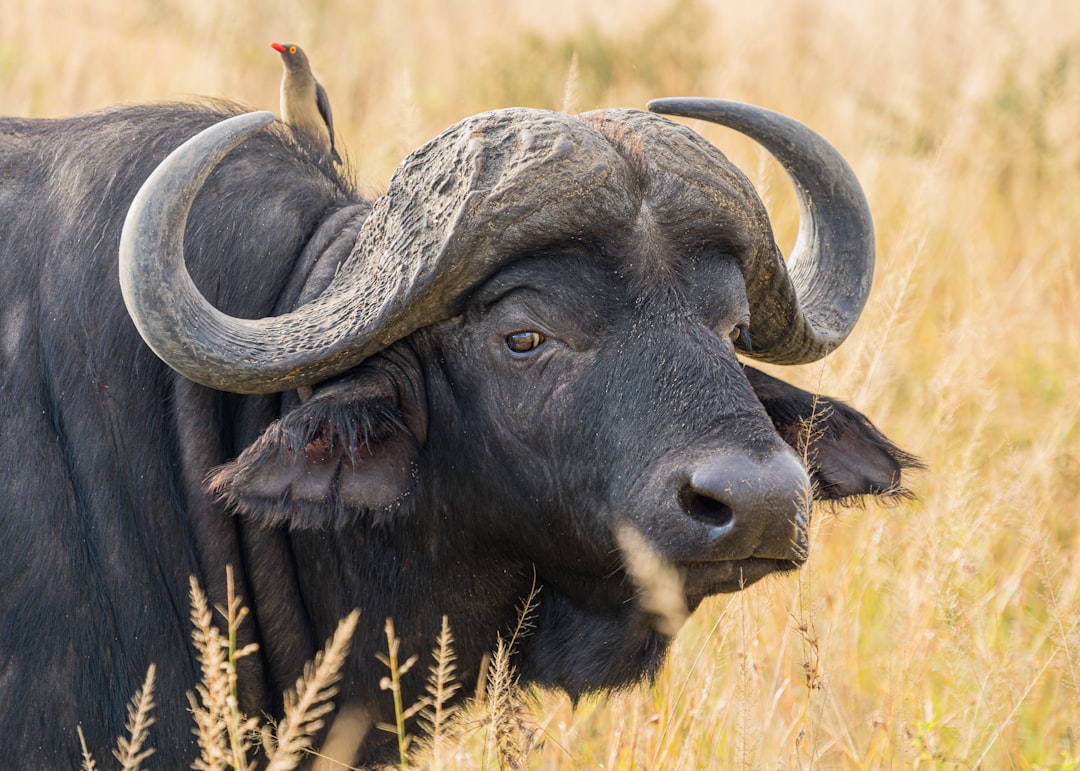Buffalo vs. Bull
What's the Difference?
Buffalo and bull are both large, powerful animals that belong to the Bovidae family. However, there are some key differences between them. Buffalo typically refers to the American bison, which is native to North America, while bull is a term used to describe male cattle. Buffalo have a distinctive hump on their shoulders and a shaggy coat, while bulls have a more muscular build and a smoother coat. Buffalo are known for their ability to survive in harsh environments, while bulls are often domesticated and used for agricultural purposes. Overall, both buffalo and bulls are fascinating creatures with unique characteristics.
Comparison

| Attribute | Buffalo | Bull |
|---|---|---|
| Species | Bison | Cattle |
| Family | Bovidae | Bovidae |
| Genus | Bison | Bos |
| Size | Large | Varies (depending on breed) |
| Horns | Both males and females have horns | Usually only males have horns |
| Appearance | Shaggy coat, hump on the back, large head | Smooth coat, muscular body |
| Native to | America (North and South) | Various regions worldwide |
| Domestication | Not domesticated | Domesticated for various purposes |
| Uses | Historically hunted for meat, hides, and bones | Used for meat, milk, labor, and breeding |
| Conservation Status | Vulnerable or Near Threatened (depending on species) | Not evaluated (varies depending on breed) |

Further Detail
Introduction
Buffalo and bull are two majestic animals that are often associated with strength and power. While they may seem similar at first glance, there are several key differences between these creatures. In this article, we will explore the attributes of buffalo and bull, highlighting their physical characteristics, behavior, habitat, and cultural significance.
Physical Characteristics
Buffalo and bull differ in their physical appearance. Buffaloes, also known as bison, are large, shaggy-haired mammals with a hump on their shoulders. They have a massive head, curved horns, and a muscular build. On the other hand, bulls are male cattle and are generally larger and heavier than female cows. They have a strong, muscular body, a prominent neck, and sharp, upward-curving horns. While both animals possess impressive physical strength, the buffalo's hump and shaggy coat give it a more robust appearance compared to the bull.
Behavior
When it comes to behavior, buffalo and bull exhibit distinct characteristics. Buffaloes are known for their herding behavior and are often found in large groups called herds. They have a strong sense of community and work together to protect their young and defend against predators. Bulls, on the other hand, are more solitary animals. They establish dominance within a herd and are known for their aggressive behavior during mating season. Bulls engage in fierce battles to win the right to mate with females, showcasing their strength and dominance. While both animals can be territorial and protective, buffalo are generally more social and cooperative compared to bulls.
Habitat
Buffalo and bull have different habitat preferences. Buffaloes are native to North America and can be found in various habitats such as grasslands, prairies, and forests. They are adaptable animals and can survive in both hot and cold climates. Bulls, on the other hand, are domesticated cattle that are found worldwide. They are often raised on farms and ranches, where they are provided with suitable grazing areas and shelter. While buffalo are more closely associated with natural habitats, bulls have adapted to living in human-controlled environments.
Cultural Significance
Both buffalo and bull hold cultural significance in different parts of the world. Buffaloes have been revered by Native American tribes for centuries. They symbolize strength, abundance, and spirituality. Native Americans used buffalo for food, clothing, and shelter, and their hides were often used for various purposes. The buffalo's importance in Native American culture is also reflected in traditional dances and ceremonies. Bulls, on the other hand, have cultural significance in many societies due to their association with agriculture and farming. They are often seen as symbols of fertility, power, and prosperity. In some cultures, bullfighting is considered a traditional sport and a display of bravery and skill.
Conclusion
While buffalo and bull share certain similarities, such as their strength and power, they also have distinct attributes that set them apart. Buffaloes have a more robust appearance with their hump and shaggy coat, while bulls have a muscular build and sharp horns. In terms of behavior, buffalo are social animals that live in herds, while bulls are more solitary and engage in aggressive behavior during mating season. Buffalo are native to North America and can adapt to various habitats, while bulls are domesticated cattle found worldwide. Lastly, buffalo hold cultural significance in Native American traditions, while bulls are associated with agriculture and farming in many societies. Understanding these differences allows us to appreciate the unique qualities of both animals and their contributions to the natural world and human culture.
Comparisons may contain inaccurate information about people, places, or facts. Please report any issues.